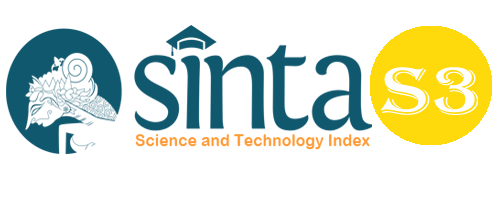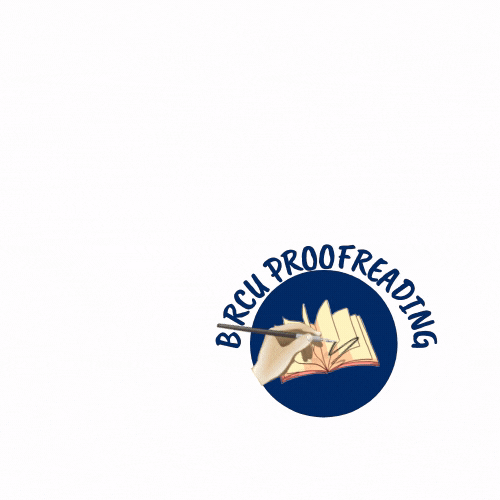The Impact of Social Media Use: A Case Study of Verbal Bullying on Adolescents
Abstract
Adolescence is a period of transition from children to adults, so at this time the search for identity becomes one of the needs to understand oneself and show oneself to others. In the development of technology, the majority of teenagers use social media. This study aims to determine the impact of using social media in case studies of verbal bullying that occur among adolescents. This type of research is a case study research with a qualitative approach. Respondents in this study were social media users, especially teenagers. Data collection techniques using interviews, observations and documents. The data analysis technique uses research data processing by listening, selecting data, analyzing data, analyzing data and concluding results. The results of this study are that the existence of social media has influenced social life in society, one of which has an impact on verbal bullying behavior. Verbal bullying is bullying/bullying that is conveyed verbally, which can take the form of criticizing, shouting, insulting, nicknames, spreading gossip/slander, dropping criticism, invitations and expressions that lead to sexual harassment, and so on and this bullying is the most common. . Parental and peer support helps adolescents to cope with bullying by focusing on developing adolescent interests.
Keywords
Full Text:
PDFReferences
Aini, SQ (2016). The phenomenon of violence in schools (school bullying) in adolescents in Pati district. Research and Development Journal, 12, 51–60
Ariesto, A. (2009). Implementation of the Antibullying Teacher Program Empowerment. http://lib.ui.ac.id/file?file=digital/123656SK%20006%2009%20Ari%20p%20%20Pelak sanaan%20Program Literatur.pdf.
Bo’do, S., Siahaan, H., and Ida, R. (2019). Social Media, Public Sphere and Movement Discussion of Urban Farming in Indonesia. Budapest International Research and Critics Institute-Journal (BIRCI-Journal) Vol 2 (3): 250-261.
Cahyono, USA (2016). The influence of social media on social change in Indonesian society. Publiciana, 9(1), 140-157.
Chan, JH F, Myron, RR, & Crawshaw, CM (2005). The efficacy of non-anonymous measures of bullying. School Psychology International, 26, 443—458.
Dewi, CIAL, & Valentina, TD (2020). Posttraumatic growth among adolescent victims of bullying: Posttraumatic growth among adolescent victims of bullying. Psychology: Journal of Psychological Thought and Research, 15(1), 13-25.
Elkind, D. (1976). Child development and education: A piagetian perspective. New York: Oxford University Press.
Hertinjung, WS (2013). Forms of bullying behavior in elementary schools. Parenting Seminar Proceedings. 450-458.
Indriyani, and Dewanti, P. (2021). Analysis of the Effect of Social Media on the Marketing Process in a Store or Business Entity "Social Media Store". Budapest International Research and Critics Institute-Journal (BIRCI-Journal) Vol 4 (4): 9804-9814.
Kim, S., and Yun, I. (2016). Bullying among South Korean adolescents: Prevalence and association with psychological adjustment. Violence and Victims, 31, 167–184. https://doi.org/https://doi.org/10.1891/0886-6708.VV-D-13-00138
Machimbarrena, JM, & Garaigordobil, M. (2018). Prevalence of bullying and cyberbullying in the last stage of primary education in the Basque Country. The Spanish Journal of Psychology, 21, 48. Accessed on June 05, 2020 from https://doi.org/10.1017/sjp.2018.41
Mundy, LK, Canterford, L., Kosola, S., Degenhardt, L., Allen, NB, & Patton, GC (2017). Peer Victimization and Academic Performance in Primary School Children.AcademicPediatrics, 17(8), 830-836. Accessed on June 06, 2020 from https://doi.org/10.1016/j.acap.2017.06.012
Panayiotou, G., and Karekla, M. (2013). Perceived social support helps, but does not buffer the negative impact of anxiety disorders on quality of life and perceived stress. Social Psychiatry and Psychiatric Epidemiology, 48, 283–294. https://doi.org/10.1007/s00127-012-0533-6
Papler, DJ, & Craig, W. (2000). Making a Difference in Bullying
Rafiq, A. (2020). The Impact of Social Media on Social Change in a Society. Global Communications, 1(1), 18-29.
Risner, D. (2014). Bullying victimization and social support of adolescent male dance students: Analysis of findings. Research in Dance Education, 15, 179–201. https://doi.org/10.1080/14647893.2014.891847
Santrock, JW (2011). Life-span development (13th ed.). New York: McGraw-Hill
Saragih, M.Y., and Harahap, A.I. (2020). The Challenges of Print Media Journalism in the Digital Era. Budapest International Research and Critics Institute-Journal (BIRCI-Journal) Vol 3 (1): 540-548.
Umamy, F., Hidayat, W., and Sitorus, ME (2019). Phenomenological study: Health dynamics of adolescent bullying victims at SMPN 2 Datuk Bandar Timur District, Tanjungbalai City. Journal of MuaraSains, Technology, Medicine and Health Sciences, 3, 245. https://doi.org/10.24912/jmstkik.v3i2.5111
Wedyawati, N., & Makin, TDIR (2019). The Correlation of Bullying Actions with Learning Outcomes of High Grade Students at 27 Pauh Desa State Elementary Schools for the 2018/2019 Academic Year. VOXEDUKASI: Scientific Journal of Education, 10(1), 29-44. https://doi.org/10.31932/ve.v10i1.357
Wirmando, W., Anita, F., Hurat, VS, & Korompis, VVN (2021). The Impact of Social Media Use on Bullying Behavior in Adolescents. Nursing Care and Health Technology Journal (NCHAT), 1(3), 117-122.
Amini Soul Seed Foundation. (2008). Bullying: Coping with violence in schools and neighborhoods. PT. Grasindo
Yin, XQ, Wang, LH, Zhang, GD, Liang, XB, Li, J., Zimmerman, MA, and Wang, JL (2017). The promotive effects of peer support and active coping on the relationship between bullying victimization and depression among Chinese boarding students. Psychiatry Research, 256, 59–65. https://doi.org/10.1016/j.psychres.2017.06.037
Zakiyah, EZ, Humaedi, S., & Santoso, MB (2017). Factors that influence adolescents in bullying. Proceedings of Research and Community Service, 4(2), 324-330.
DOI: https://doi.org/10.33258/birci.v5i1.4050
Article Metrics
Abstract view : 388 timesPDF - 136 times
Refbacks
- There are currently no refbacks.

This work is licensed under a Creative Commons Attribution-ShareAlike 4.0 International License.

This work is licensed under a Creative Commons Attribution-ShareAlike 4.0 International License.

_.gif)

















_.gif)



